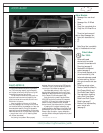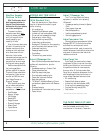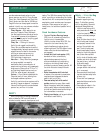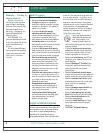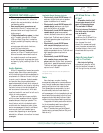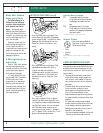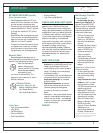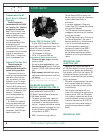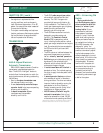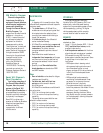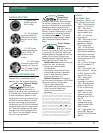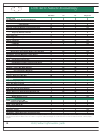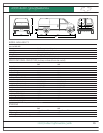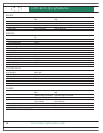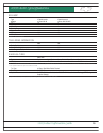
provide customers broad options in size,
power, economy and utility. Chevy Express,
Chevy Van, Astro Passenger and Cargo Van,
Chevy Venture and the new-for-’98 Venture
Cargo Minivan can be equipped to meet the
needs of virtually any van customer, whether
for personal or commercial use.
Chevy Express — With seating for as
many as 15 people, Chevy Express is
the ideal people mover and cargo hauler.
It serves both
commercial and personal
applications that require “anything goes”
versatility in a full-size van.
Chevy Van — Offering full-size van
flexibility and rugged truck durability,
Chevy Van provides exceptional comfort,
impressive safety features, superior towing
capabilities and is ideal for conversion
upfitting or serious cargo-carrying
applications thanks to as much as
316.8 cubic feet of cargo room.
Astro Van — Chevy Astro Van (passenger
and cargo models) is a versatile
workhorse, offering a combination of
people-moving (as many as 8 passengers),
cargo-carrying (as much as 170.4 cu. ft.)
and trailering capabilities (as much as
5,500 lbs., when properly equipped).
Venture — Chevy Venture completes the
Chevrolet family of vans, offering time-
challenged customers optimum
flexibility, comfort and convenience, while
providing “space on demand,” impressive
ride and handling and the most standard
power of any minivan in its class.
SAFETY
With a long history of setting automotive
safety milestones, GM is a world leader in
automotive safety research, development and
testing. The 1998 Astro exemplifies that dedi-
cation, providing an outstanding list of safety
features. And, with a comprehensive system,
emphasizing crash avoidance and occupant
protection, Astro owners not only get a
versatile van, but additional peace of mind,
as well.
Crash Avoidance Features
• Standard Daytime Running Lamps
(DRL) turn on automatically when the
ignition is on to increase Astro
visibility to other drivers. With DRL, the
lamps run at a lower intensity than
regular headlamps to reduce glare to
oncoming drivers. The DRL system is over-
ridden when the vehicle’s headlamps
are engaged.
• 4-wheel anti-lock brake system (ABS),
standard on Astro, automatically
adjusts brake pressure to the front
and rear wheels during hard-braking
situations, minimizing wheel lockup
and helping maintain steering control. All
the driver has to do is keep the brake
pedal down.
• Brake/transmission shift interlock,
a feature of the automatic transmission,
requires drivers to depress the brake
pedal to shift out of Park.
• Rear-seat safety belt child comfort
guides, standard on every Astro model,
adjust the angle of safety belt crossover,
making safety belts more comfortable for
children and smaller sized adults riding in
the intermediate or rear seats.
• Sloping hood design and large windshield
contribute to road visibility.
Safety ... It’s in the Bag
There’s been a lot of
discussion regarding air bag
safety. To help Astro owners
with air bag safety, Chevrolet
developed these guidelines:
• Infants in rear-facing child
safety seats should never
ride
in the front seat of a vehicle
with an activated passenger
air bag
• Small children should ride in
a child safety seat located
and properly secured in the
center of the vehicle’s rear
seat. The child safety seat
should meet federal require-
ments for the child’s age and
size. (Astro offers optional
built-in dual child safety seats
(middle row) which eliminate
the need to carry individual
child safety seats.)
• Children ages 12 and
younger should ride buckled
up in a rear seat
• Everyone should buckle both
lap and shoulder safety belts
on every trip
• Driver and front-passenger
seats should be moved as far
back as practical
• Never place an object in the
air bag deployment zone.
1998 Astro
1998 Product Information Guide 3
The Chevy family of vans includes Chevy Express (left), Chevy Van, Astro Van and Venture



